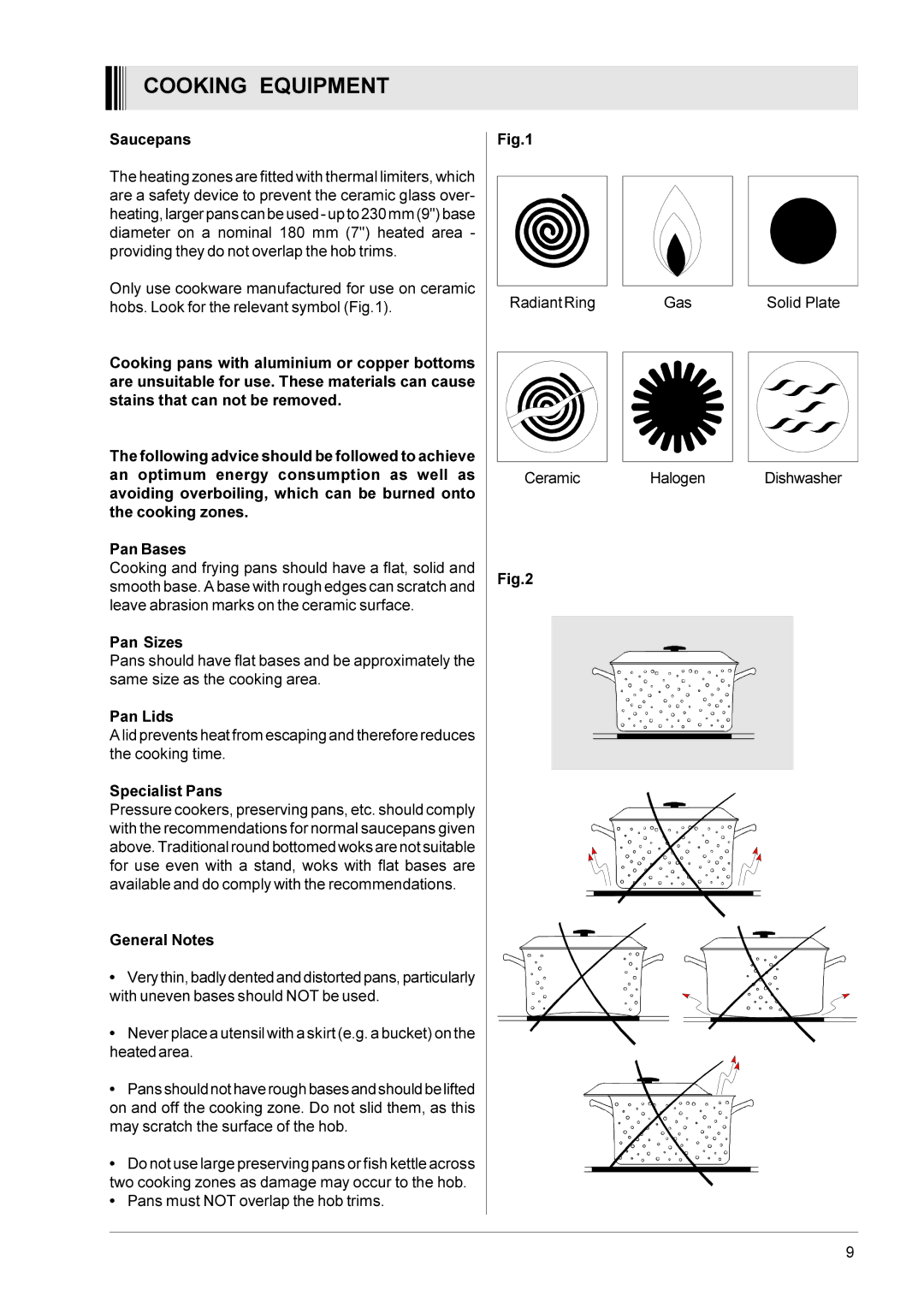
COOKING EQUIPMENT
Saucepans
The heating zones are fitted with thermal limiters, which are a safety device to prevent the ceramic glass over- heating, larger pans can be used - up to 230 mm (9") base diameter on a nominal 180 mm (7") heated area - providing they do not overlap the hob trims.
Only use cookware manufactured for use on ceramic hobs. Look for the relevant symbol (Fig.1).
Fig.1
Radiant Ring | Gas | Solid Plate |
Cooking pans with aluminium or copper bottoms are unsuitable for use. These materials can cause stains that can not be removed.
The following advice should be followed to achieve an optimum energy consumption as well as avoiding overboiling, which can be burned onto the cooking zones.
Pan Bases
Ceramic |
Halogen Dishwasher
Cooking and frying pans should have a flat, solid and smooth base. A base with rough edges can scratch and leave abrasion marks on the ceramic surface.
Pan Sizes
Pans should have flat bases and be approximately the same size as the cooking area.
Pan Lids
A lid prevents heat from escaping and therefore reduces the cooking time.
Specialist Pans
Pressure cookers, preserving pans, etc. should comply with the recommendations for normal saucepans given above. Traditional round bottomed woks are not suitable for use even with a stand, woks with flat bases are available and do comply with the recommendations.
General Notes
•Very thin, badly dented and distorted pans, particularly with uneven bases should NOT be used.
•Never place a utensil with a skirt (e.g. a bucket) on the heated area.
•Pans should not have rough bases and should be lifted on and off the cooking zone. Do not slid them, as this may scratch the surface of the hob.
•Do not use large preserving pans or fish kettle across two cooking zones as damage may occur to the hob.
•Pans must NOT overlap the hob trims.
Fig.2
9
